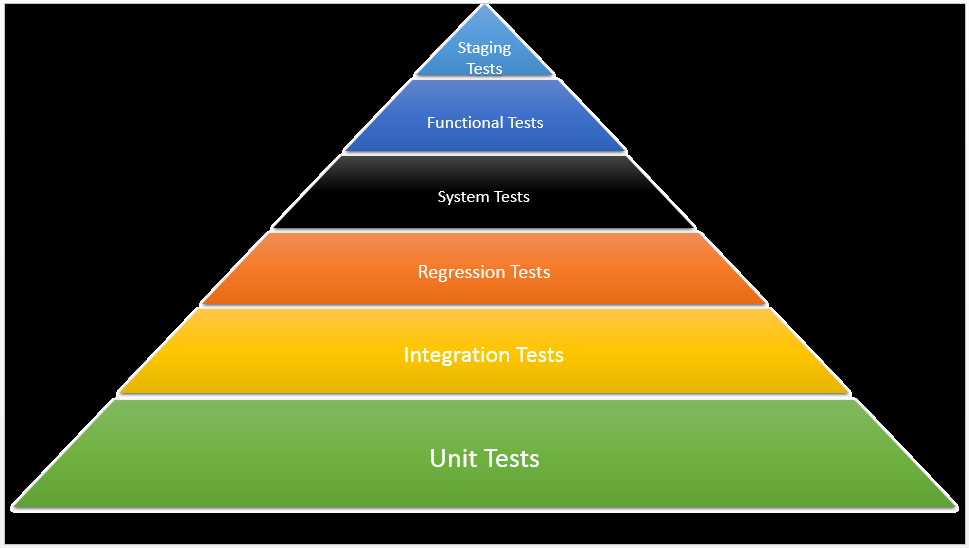C++ Unit Testing with googletest
An introduction to C++ Unit Testing using googletest framework.
Basics
What is a Unit Test?
A unit test is a piece of code developed with the purpose of testing production code. A unit test will interact with a production code unit to ensure that it is working well. All this is done in a controlled and pre-designed environment, where inputs and outputs are known.
Qualities of a good Unit Test
- Independent and repeatable
- Can be automated
- Runs fast
- Easy to identify the root cause when it fails
- Focus on functionality, not on implementation
- Easy to understand and maintainable
The closer we are to the code, the more tests we should have. For that reason, unit test should be the most abundant tests.
Types of Tests
- Unit Test – standalone test not related to other resources. It is run frequently.
- Integration Test – tests the correct interaction of the various components of the entire application, multiple packages, and several components. It also tests interaction with external resources.
- Regression Test – Testing of a previously tested program following modification to ensure that defects have not been introduced or uncovered in unchanged areas of the software, as a result of the changes made. It is to make sure that the application provides the same outcome.
- System Test – tests a system as a black box. While this test, you watch your SUT (System Under Test) with an external point of view. You perform stress tests, monitor memory usage, and check response time.
- Acceptance / Functional Test – validates that a feature or use case is correctly implemented, testing the system against functional requirements. They are generally performed by Quality Assurance teams and/or with the clients.
- Staging Test – These tests are run in a production-like environment. Input data are forked in live both to the production platform and the staging platform.
Google Test framework
googletest is a testing framework developed by the Testing Technology team with Google’s specific requirements and constraints in mind.
Basics
- When using googletest, you start by writing assertions, which are statements that check whether a condition is true. An assertion’s result can be success, nonfatal failure, or fatal failure.
- A test suite contains one or many tests. You should group your tests into test suites that reflect the structure of the tested code. When multiple tests in a test suite need to share common objects and subroutines, you can put them into a test fixture class.
- A test program can contain multiple test suites.
Assertions
- googletest assertions are macros that resemble function calls
- You test a class or function by making assertions about its behavior
- When an assertion fails, googletest prints the assertion's source file and line number location, along with a failure message
- You mal also supply a custom failure message which will be appended to googletest's message
- Assertions come in pairs that test the same thing but have different effects on the current function
ASSERT_*versions generate fatal failures when they fail, and abort the current functionEXPECT_*versions generate non-fatal failures, which don't abort the current function- To provide a custome failure message, simply stream it into the macro using the
<<operator or a sequence of such operators - Example
ASSERT_EQ(x.size(), y.size()) << "Vectors x and y are of unequal length";
for (int i = 0; i < x.size(); ++i) {
EXPECT_EQ(x[i], y[i]) << "Vectors x and y differ at index " << i;
}
Simple Tests
- Use the
TEST()macro to define and name a test function. These are ordinary C++ functions that don't return a value - In this function, use the various googletest assertions to check values
- The test's result is determined by the assertions; if any assertion in the test fails (either fatally or non-fatally), or if the test crashes, the entire test fails. Otherwise, it succeeds
TEST(TestSuiteName, TestName) {
/*
test body - a bunch of assertions and stuff
*/
}
